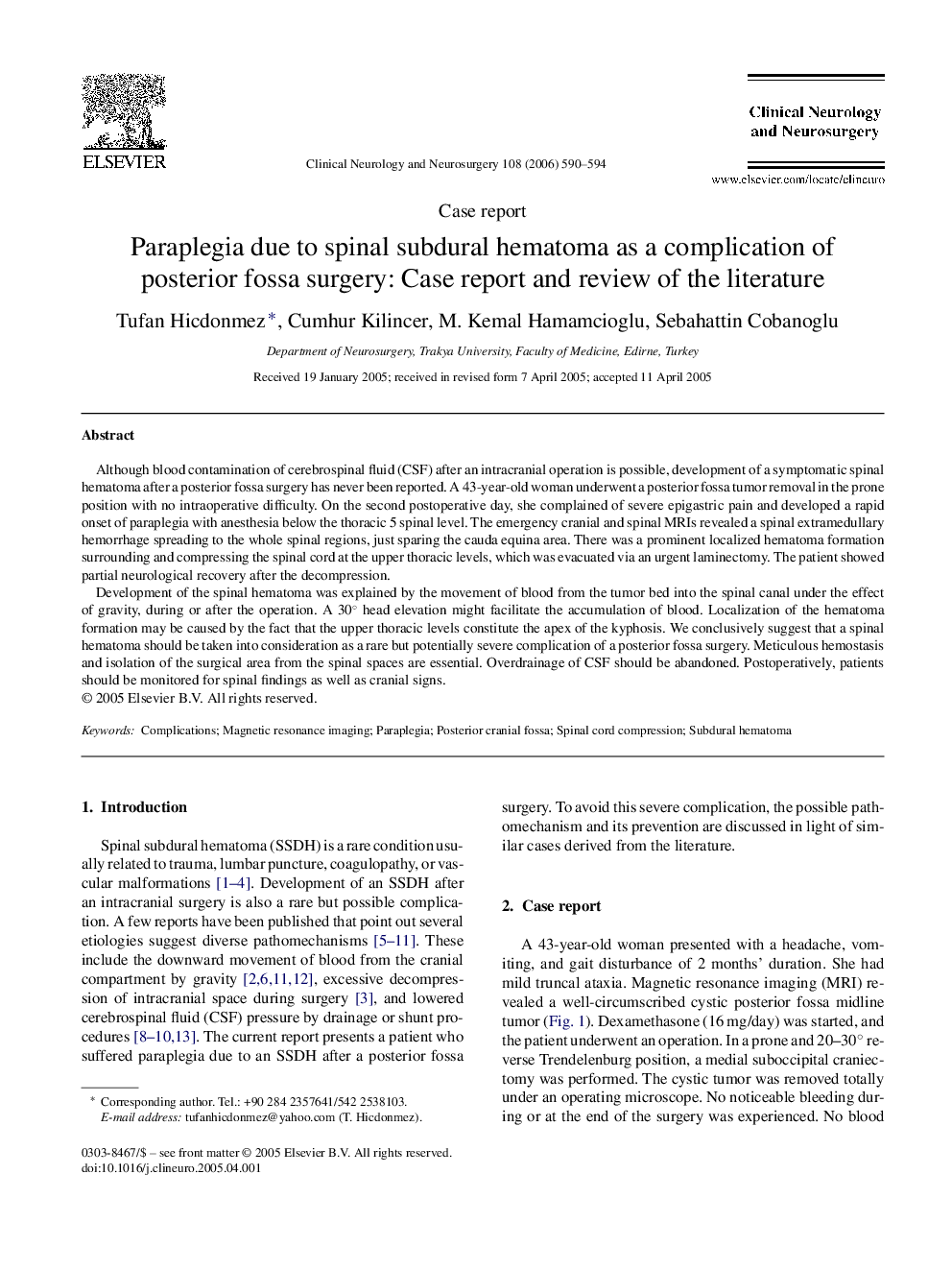| Article ID | Journal | Published Year | Pages | File Type |
|---|---|---|---|---|
| 3042253 | Clinical Neurology and Neurosurgery | 2006 | 5 Pages |
Although blood contamination of cerebrospinal fluid (CSF) after an intracranial operation is possible, development of a symptomatic spinal hematoma after a posterior fossa surgery has never been reported. A 43-year-old woman underwent a posterior fossa tumor removal in the prone position with no intraoperative difficulty. On the second postoperative day, she complained of severe epigastric pain and developed a rapid onset of paraplegia with anesthesia below the thoracic 5 spinal level. The emergency cranial and spinal MRIs revealed a spinal extramedullary hemorrhage spreading to the whole spinal regions, just sparing the cauda equina area. There was a prominent localized hematoma formation surrounding and compressing the spinal cord at the upper thoracic levels, which was evacuated via an urgent laminectomy. The patient showed partial neurological recovery after the decompression.Development of the spinal hematoma was explained by the movement of blood from the tumor bed into the spinal canal under the effect of gravity, during or after the operation. A 30° head elevation might facilitate the accumulation of blood. Localization of the hematoma formation may be caused by the fact that the upper thoracic levels constitute the apex of the kyphosis. We conclusively suggest that a spinal hematoma should be taken into consideration as a rare but potentially severe complication of a posterior fossa surgery. Meticulous hemostasis and isolation of the surgical area from the spinal spaces are essential. Overdrainage of CSF should be abandoned. Postoperatively, patients should be monitored for spinal findings as well as cranial signs.
